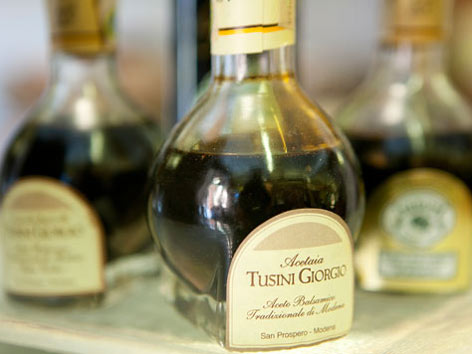Ethiopian Chicken Stew (Doro Wett)
Ethiopia
amantour

guides you to the best local dishes & drinks in
125+ cities. See map now



.jpg) Going somewhere and wish you could take all of a city’s Eat Your World info with you? With EYW’s Kindle and City Guides, you can! Don’t miss out on any local foods or drinks during your next trip.
Going somewhere and wish you could take all of a city’s Eat Your World info with you? With EYW’s Kindle and City Guides, you can! Don’t miss out on any local foods or drinks during your next trip.
EYW wants your food photos!

EYW wants your food stories!
Hey guys I am a traveler who loves to explore different places around the world. I often visit outside of Canada, So whenever I have to travel around the world I always book my flight tickets from the... Read more
<< back to foods in Emilia-Romagna

What: Affectionately known as Italy’s “black gold,” traditional balsamic vinegar, or aceto balsamico tradizionale, will challenge your very notion of “vinegar.” Surely you’ve seen the words “balsamic vinegar of Modena” on a supermarket bottle label before, but that’s where the similarity ends between that and the real deal in Modena. Like Parmigiano-Reggiano, aceto balsamico tradizionale di Modena is classified as “Protected Denomination of Origin” (or Denominazione di Origine Protetta, DOP, in Italian) by the EU and held to stringent standards governed by an Italian consortium, which dictates everything from how the vinegar is made to the shape of the bottle it’s sold in. Produced directly from the cooked juice of Trebbiano and Lambrusco grapes harvested in the region (as opposed to most vinegars, which are fermented from alcoholic liquids), balsamic vinegar is oxidized, aged, and concentrated in a row of casks of decreasing size made from different woods for a number of years (to be tradizionale it must be aged for at least 12 years). All the while it is tended to via a special technique involving decanting and “topping up” between casks, in which small amounts of new vinegar are added to the largest barrel, which then tops up the next smallest barrel, and so on down the row. The actual product—a few liters a year—is withdrawn only from the smallest barrel, and only after a minimum of 12 years. It must then be approved by expert tasters.
Traditional balsamic vinegar made in this manner is unfathomably delicious: rich and thick, almost syrupy, with complex, perfectly proportioned flavors—sweet, sour, woody, fruity, acidic—that are coaxed out by master craftsman using ancient methods over the course of 12-plus years. It’s a truly remarkable thing.
Good to know: The authentic, artisanal 12-year product is always labeled as “aceto balsamico tradizionale di Modena” (or “aceto balsamico tradizionale di Reggio Emilia,” as that province likewise produces balsamic vinegar and has its own consortium); the same title followed by “extra vecchio” (extra old) indicates at least 25 years of aging. Tradizionale is the key word here. Something called just “aceto balsamico di Modena”—or the same in English, of course—is a cheap imitation usually made of wine vinegar and additives; it’s not regulated at all, so quality can vary wildly.
Where: If you’re in Modena, we highly recommend a quick visit to one of the area’s many family-owned artisanal acetaias, or vinegar farms, where you’ll learn about the process and can purchase directly from the producer. We enjoyed a free hour-long tour of Acetaia Rossi Barattini (Via Giardini Sud 170; English spoken, map) in Formigine, a few kilometers each from the cities of Modena and Maranello, home to the Ferrari car factory and museum. At the acetaia, we bought our own 12-year aceto balsamico tradizionale for €40—a pricey but long-lasting gift that keeps on giving. This acetaia also sells various sauces and jams made with the vinegar, as well as “nontraditional” aceto balsamico, which is produced from wine vinegar and cooked grape must. At €10, it’s still of very good quality and quite tasty, and you can use it without guilt for things like salad dressings. (The expensive stuff you want to use more preciously and in small amounts, for drizzling over cheeses, meats, fish, fruits, gelato, etc., just before serving.)
When: Tours are by reservation only (book through website), and are not offered in December.
Alternatively: Even closer to Modena city is Acetaia di Giorgio (Via S.Cabassi 67, map), also permitting tours if you contact them in advance. If you can’t visit a producer, you can buy aceto balsamico tradizionale from salumerias all over Emilia-Romagna; many vendors will allow you a taste from a spoon, too. Our favorite way to enjoy the vinegar is drizzled over Parmigiano-Reggiano at restaurant’s like Parma’s Trattoria Vigolante (+39 0521-671143; Via Valera di Sopra 112, map).
©2025 Eat Your World, LLC - All Rights Reserved